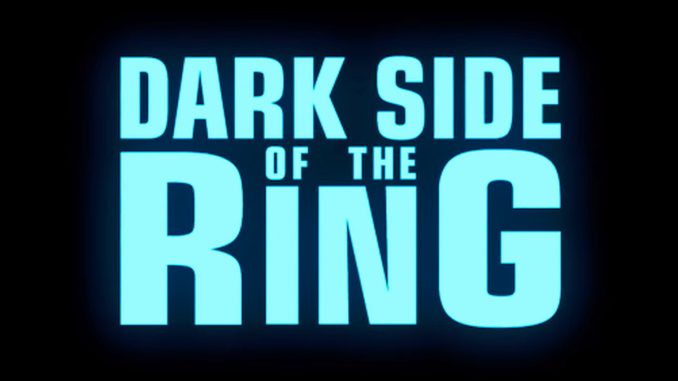
By: Jack Wannan
Contributor to POST Wrestling
Evan Husney isn’t afraid to admit that the title of the Vice TV show Dark Side of the Ring could sound a little tabloid or negative at first — but that’s certainly not the approach he has had since launching the series in 2019.
Husney, along with co-creator John Eisener and their team at Vice Studios have had the same goal with the show since the very start, back when they were shooting the first season and their show didn’t even have a title. He wanted to approach pro wrestling’s harder-to-discuss topics in a way that people could connect with, even if they weren’t an active follower of the scene.
“Even though it’s the crazy world of wrestling, you can really relate to a lot of the stories on the show,” Husney said when he was part of a live POST Wrestling broadcast with John Pollock and Brandon Thurston on Thursday. “I think, just for me, it’s just always trying to keep in mind, how can we see the world through the weird lens of wrestling.”
Husney and his team have tackled prolific wrestling stories through the first three seasons. This includes the infamous “Plane Ride from Hell,” unpacking the life and death of wrestlers like Chris Benoit and Eddie Guerrero, and the accident that killed Owen Hart. The premiere of season four aired Tuesday, covering the relationship between Chris Candido and Tammy Sytch.
Dark Side of the Ring episodes show visual re-enactments of scenes that are often told by people directly involved with stories. The goal with this style of storytelling, Husney says, is to unpack the many perspectives of situations — which are not “black or white” — and let viewers interpret it how they’d like.
“We try to let [the subject] speak and show their point of view rather than our point of view coming through and being like ‘Okay here’s how you should feel about this.’ I think we do a good job at leaving it in the audience’s hands at the end of the day.”
The docu-series took a break in 2022, making way for spin-off Tales From The Territories, a show which captured stories from the years of wrestling that were ruled by promotions like Stampede Wrestling, WCCW, AWA, Jim Crockett Promotions, and others. Despite Dark Side of the Ring being absent for a year, Husney said the plan was always for it to return. “The idea that there wouldn’t be another season, to me … I couldn’t quite understand that,” he said.
But Dark Side of the Ring was not always an easy sell. Husney recalls working hard to get the show approved when it first started out.
“It was really, really, really hard to get this show in the greenlight zone because there was no familiarity with that wrestling audience,” Husney said. “It was just kind of that age-old stereotype that wrestling fans aren’t affluent and their [TV] ratings don’t mean anything. But it’s like, no.”
But in 2019, when AEW struck a deal to air Dynamite on TNT, things changed.
“[We were] like ‘Look, you have two major companies now in these two different cable channels.’ And that was a huge part of trying to convince Vice to pull the trigger and air these shows because they were sitting on a shelf for a little bit.”
One of the most discussed episodes of the show was when they covered “The Plane Ride From Hell” — a flight full of WWE wrestlers in 2002 that resulted in arguments, physical confrontations, and a 2004 lawsuit against the WWE from two flight attendants who brought forth allegations of sexual assault. The episode in particular highlighted allegations that Flair cornered a flight attendant and forced her to touch him while he was naked.
The reception to that episode became a big deal — one that surprised Husney and others.
“I don’t think anybody from our side and definitely the people in the episode felt like it would have that amount of controversy or blowback or whatever,” Husney told POST. “So I do think there was like, walking back some of the things that were said on the program and everything. But for us it’s like, it’s never been about [being] like ‘we’re judging somebody and this is a black or white situation.’ This is a complicated situation, and I think for all of us it’s always been at the heart, to tell the story and to be faithful to the point of views of the people that have shown up on camera. And that’s what you got with that.”
At the end of the day, Husney hopes that the show can allow viewers to look at stories from wrestling and see how it relates to their lives. The wide range of topics that the show has covered could potentially relate to viewers in one way or another.
“How can you see this story, hear this story and examine maybe your own experiences? Maybe you were subject to a similar experience? Or maybe you did something to somebody else and you should maybe examine your behavior. And maybe that helps you relate to this story on some level.”
